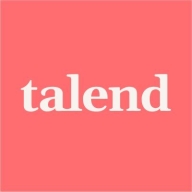

IBM InfoSphere DataStage and Talend Data Fabric compete in the data integration platform category. Talend Data Fabric is often favored for its advanced features and perceived value for its cost, although IBM InfoSphere DataStage is recognized for its strengths in pricing and support.
Features: IBM InfoSphere DataStage is known for massive data processing, seamless integration with IBM ecosystems, and robust metadata management. Talend Data Fabric is praised for open-source flexibility, extensive connectors, and advanced data transformation capabilities.
Room for Improvement: IBM InfoSphere DataStage can improve in deployment complexity, initial integration duration, and user interface modernization. Talend Data Fabric could enhance its documentation, address scaling issues, and provide better support for large enterprise environments.
Ease of Deployment and Customer Service: Talend Data Fabric offers simpler deployment with cloud and on-premise hybrid models and has highly responsive customer service. IBM InfoSphere DataStage, while providing comprehensive documentation, has a more complex deployment process.
Pricing and ROI: IBM InfoSphere DataStage requires a higher initial setup cost but offers substantial long-term ROI with stable performance. Talend Data Fabric has lower initial costs and rapid ROI due to flexible pricing models and open-source benefits.
| Product | Market Share (%) |
|---|---|
| IBM InfoSphere DataStage | 3.5% |
| Talend Data Fabric | 0.9% |
| Other | 95.6% |


| Company Size | Count |
|---|---|
| Small Business | 23 |
| Midsize Enterprise | 4 |
| Large Enterprise | 25 |
| Company Size | Count |
|---|---|
| Small Business | 4 |
| Large Enterprise | 3 |
IBM InfoSphere DataStage is a high-quality data integration tool that aims to design, develop, and run jobs that move and transform data for organizations of different sizes. The product works by integrating data across multiple systems through a high-performance parallel framework. It supports extended metadata management, enterprise connectivity, and integration of all types of data.
The solution is the data integration component of IBM InfoSphere Information Server, providing a graphical framework for moving data from source systems to target systems. IBM InfoSphere DataStage can deliver data to data warehouses, data marts, operational data sources, and other enterprise applications. The tool works with various types of patterns - extract, transform and load (ETL), and extract, load, and transform (ELT). The scalability of the platform is achieved by using parallel processing and enterprise connectivity.
The solution has various versions, catering to different types of companies, which include the Server Edition, the Enterprise Edition, and the MVS Edition. Depending on which version a company has bought, different goals can be achieved. They include the following:
IBM InfoSphere DataStage can be deployed in various ways, including:
IBM InfoSphere DataStage Features
The tool has various features through which users can integrate and utilize their data effectively. The components of IBM InfoSphere DataStage include:
IBM InfoSphere DataStage Benefits
This solution offers many benefits for the companies that utilize it for data integration. Some of these benefits include:
Reviews from Real Users
A data/solution architect at a computer software company says the product is robust, easy to use, has a simple error logging mechanism, and works very well for huge volumes of data.
Tirthankar Roy Chowdhury, team leader at Tata Consultancy Services, feels the tool is user-friendly with a lot of functionalities, and doesn't require much coding because of its drag-and-drop features.
Talend, a leader in cloud data integration and data integrity, enables companies to transform by delivering trusted data at the speed of business.
Talend Data Fabric offers a single suite of apps that shorten the time to trusted data. Users can collect data across systems; govern it to ensure proper use, transform it into new formats and improve quality, and share it with internal and external stakeholders.
Over 3,000 global enterprise customers have chosen Talend to help them turn all their raw data into trusted data to make business decisions with confidence — including GE, HP Inc., and Domino’s.
We monitor all Data Integration reviews to prevent fraudulent reviews and keep review quality high. We do not post reviews by company employees or direct competitors. We validate each review for authenticity via cross-reference with LinkedIn, and personal follow-up with the reviewer when necessary.